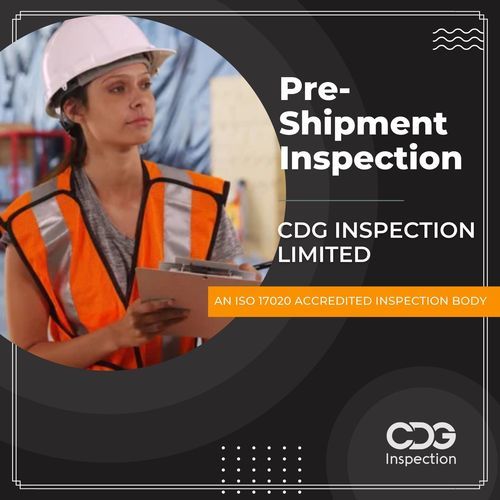Pre -Shipment inspection in Alwar
Product Details:
Product Description
CIL Provides Accredited Pre-Shipment Inspection Services in Alwar, Rajasthan, India. CIL is an ISO 17020 accredited inspection body.Pre shipment inspections (PSI) are required when mandated bythe government of the importing country. Governments assert that pre shipmentinspections ensure that the price charged by the exporter reflects the truevalue of the goods, prevent substandard goods from entering their country, andmitigate attempts to avoid the payment of customs duties. Most countries on thelist above request inspections for shipments above a certain value. However, insome instances inspections are necessary for all imported products, regardlessof value. In some cases, a country may require PSIs only for certain types ofgoods. For example, Kuwait requires PSI for regulated products valued at morethan 3,000. Mexico requires a PSI for a variety of goods such as shoes, textiles,steel, and bicycles only if they do not qualify for NAFTA. Shipments to SaudiArabia and Kuwait must contain a certificate of conformity for a small numberof products. Though not referred to as a pre shipment inspection, thiscertification verifies that the product conforms to the relevant standard bytesting and inspecting prior to shipment from the exporting county. PSIregulations change often, and contracts for pre shipment inspections arereviewed periodically. Exporters can contact the Commerce Departments TradeInformation Center at 1 800 USA TRAD(E), inspection companies, or freightforwarders for more information on current regulations.
WHO CONDUCTS THE PRE SHIPMENT INSPECTION AND WHO PAYS?
Pre shipment inspections are typically performed bycontracted private organizations. In most cases, importers can select from ashort list of these organizations when planning inspections. However, sometimesone firm is appointed to carry out inspections for a given country on anexclusive basis. Although the importer is generally responsible for arrangingthe pre shipment inspection, the exporter must make the goods available forinspection in the country of origin. Delays in the process can lead to problemswith the shipment and/or increased costs for the exporter. Therefore, it is inthe best interest of exporters to work with their freight forwarder to ensurethat all information is accurate and is provided to the inspection companyimmediately after notification of the requested inspection. Requirements forpre shipment inspections are sometimes spelled out in letters of credit orother documents. Generally, the inspection company starts the inspectionprocess once it receives a copy of the inspection order from the importingcountry. An inspection order states the value of goods, the name and address ofthe importer and the exporter, the country of supply, and the importersdeclaration of customs code. The inspection company then contacts the exporterto arrange an inspection site and time.
The steps of the inspection process are usually as follows,
1. The importer opens an import document or license.
2. The importer informs the inspection service in thecountry of import of a pending shipment, and either pays for the inspection upfront or pays a percentage based on the value of the commercial invoice,depending on the terms of the importing countrys inspection contract.
3. An inspection order is forwarded to the inspectioncompany office in the country of export.
4. The inspection company contacts the exporter to arrangedate, time, and location for inspection. It also requests all required shippingdocuments and price information (invoices). The exporter must provide thesedocuments in a timely manner to avoid demurrage or other penalties.
5. The inspection is performed.
6. If no discrepancies are noted during the inspection, andonce all final documents are received from the importer and exporter, a CleanReport of Findings is issued confirming the shipments value, customsclassification, and clearance. The final documents required for issuance of theClean Report of Findings vary by contract but most often include a finalinvoice and bill of lading or airway bill.
7. The goods are shipped to the importing country.
8. The importer uses the inspection report to get theimported goods released from customs. If goods reach the border of theimporting country without inspection, they usually have to be re exported to anearby country for inspection prior to re entry or are subject to heavypenalties.

Price:
- 50
- 100
- 200
- 250
- 500
- 1000+








